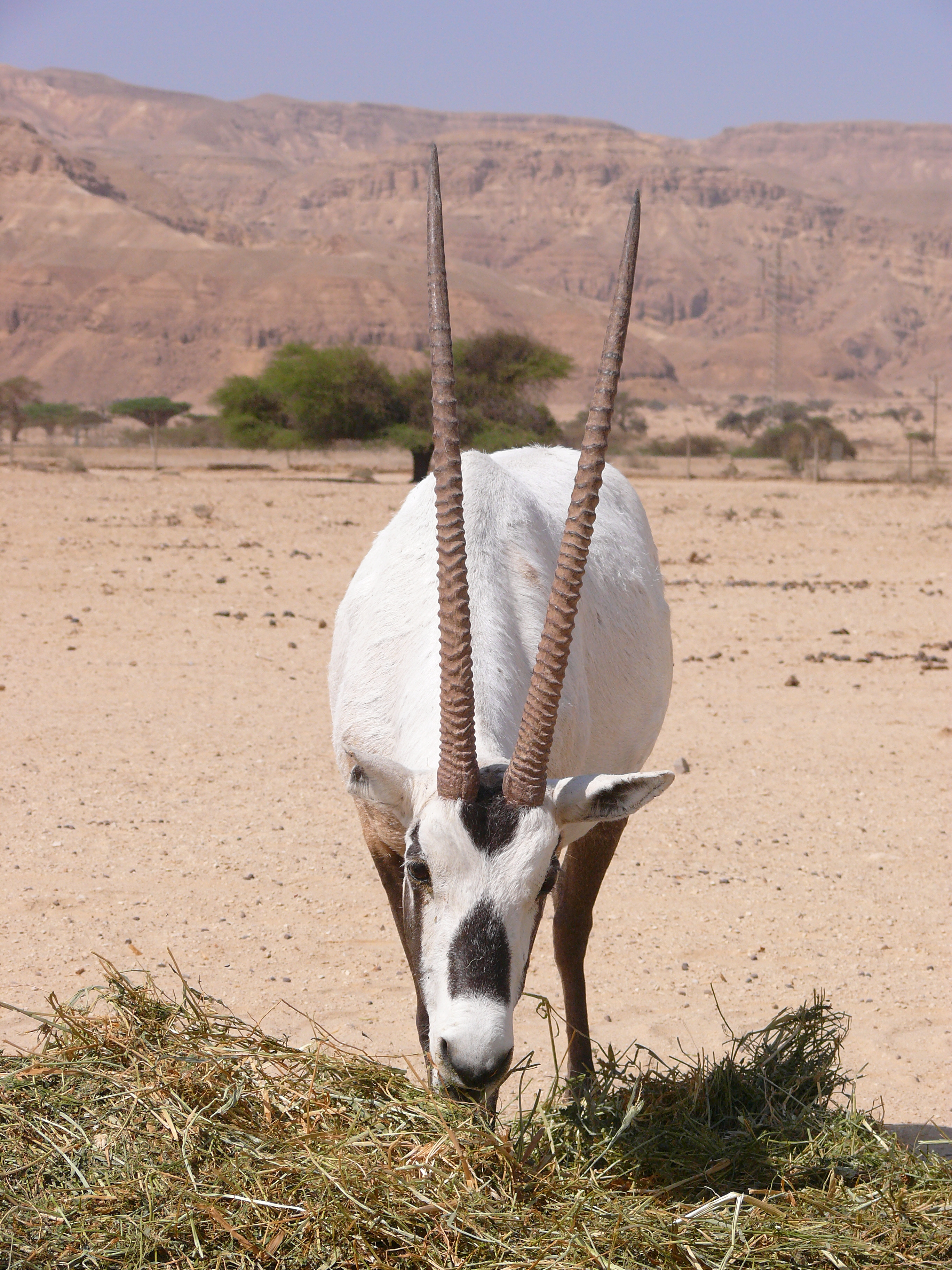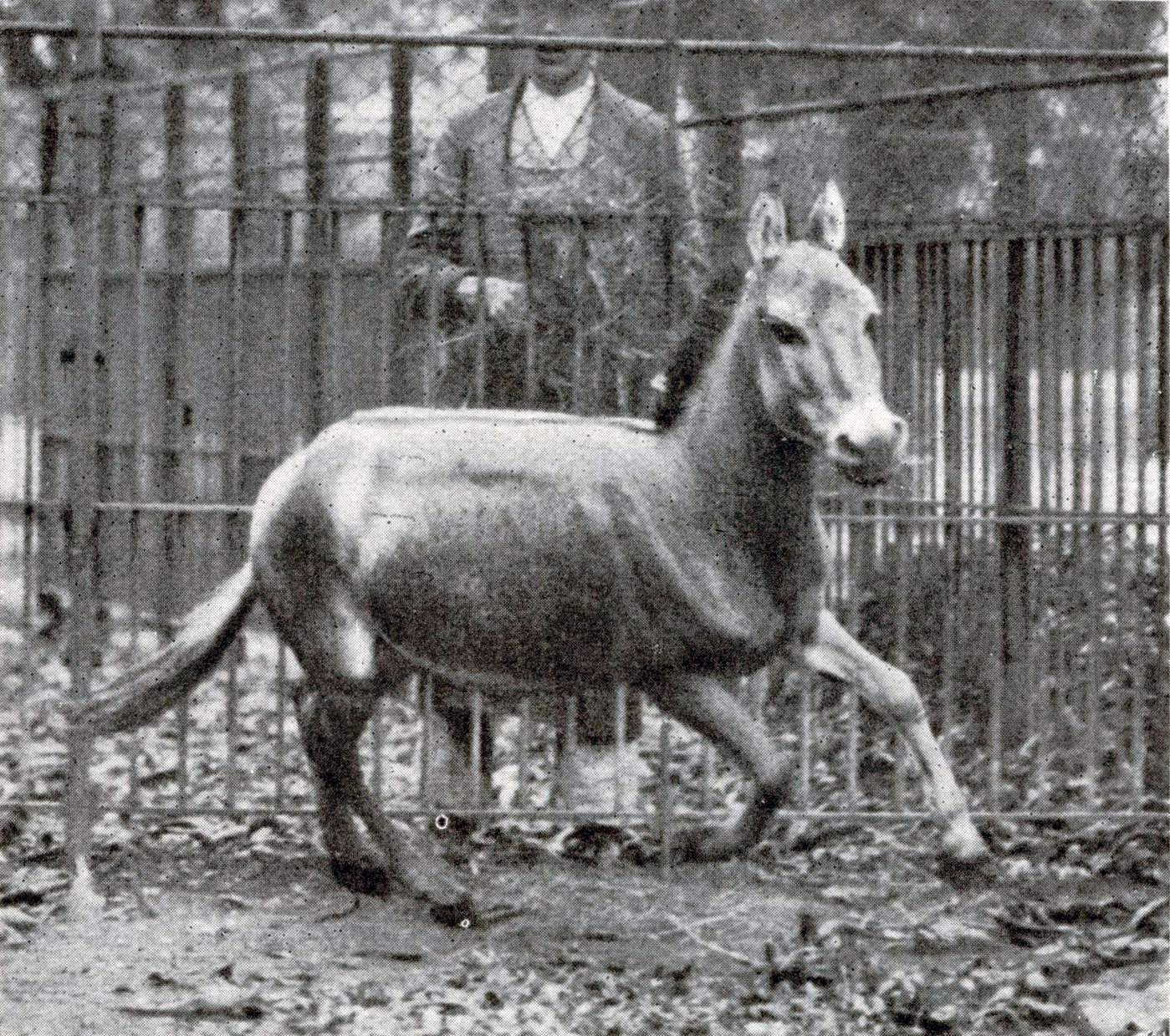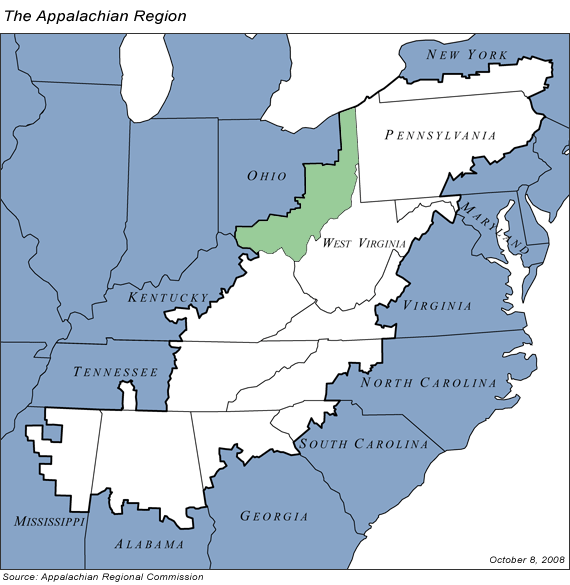|
Persian Onager
The Persian onager (''Equus hemionus onager''), also called the Persian wild ass or Persian zebra, is a subspecies of onager (Asiatic wild ass) native to Iran (Persia). It is listed as Endangered, with no more than 600 individuals left in the wild and only 30 individuals living within North American institutions. Taxonomy and history The Persian onager is also simply named ' (گور) meaning "zebra" in Persian. "Onager" is from the Greek ''ὄναγρος'' (onagros), meaning "wild ass". Sometimes, the term "onager" is reserved specifically for this subspecies. However, as the whole species of the Asiatic wild ass is known simply as onager, it now also serves as the Persian wild ass's scientific name, as well (''Equus hemionus onager''). Information on the basic biology of the subspecies and how it differs from others is lacking, which hampers conservation efforts. Onagers used to be numerous from the Middle East to China. However, until the 19th century, their population has b ... [...More Info...] [...Related Items...] OR: [Wikipedia] [Google] [Baidu] |
Augsburg Zoo
Augsburg Zoo is a zoo located in the city of Augsburg in Bavaria, Germany, and with over 600,000 visitors annually, the zoo belongs to the 20 largest Zoos in Germany. Augsburg Zoo holds 1,600 animals belonging to 300 different species. Of those animals, the zoo keeps 100 reptiles and amphibians from 25 species. The zoo is involved in the 18 European Endangered Species Programmes. History Already in year 800, the town of Augsburg had tropical species of animals within its borders, when Emperor Charlemagne placed his Asian elephant Abul-Abbas in Augsburg., citing Hodges, Richard. (cf. ) An elephant was a gift to the emperor from the caliph Ar-Rashid, and was walked from Italy through Achen Pass to Germany, and later walked to Augsburg where the emperor preferred to keep his elephant. In 1410, an enclosure for deer was established at the city wall, those deer were shot by French soldiers in 1796 during the war of War of the First Coalition. with the name ''Park der deutschen Tier ... [...More Info...] [...Related Items...] OR: [Wikipedia] [Google] [Baidu] |
Shahroud
Shahrood ( fa, شاهرود, also Romanized as Shâhrūd, and Shahroud; also known as Shârūd) is a city and capital of Shahrood County, Semnan Province, Iran. Situated about an altitude of 1345 m, it is located at latitude 36°25'N, longitude 055°01'E. The main launch site of the Iranian Space Agency is near Shahrood. It is also well known for unique types of grapes which are cultivated specially in Shahrud. Consequently, Shahrood is known as the City of Grapes. Although absent from earlier historical sources, Shahrud has become an important town since the 19th century because of its location on the road from Tehran east to Khorasan. It now also is on the railway. A road runs from Shahrud across the Alborz mountains to the Caspian coastal plains in the north; it is accessible throughout winter. Shahrud was renamed Imāmrūd after the Iranian Revolution of 1979, but has since reverted to the old name. It is located just south of the historical city of Bastam. Geography ... [...More Info...] [...Related Items...] OR: [Wikipedia] [Google] [Baidu] |
Introduced Species
An introduced species, alien species, exotic species, adventive species, immigrant species, foreign species, non-indigenous species, or non-native species is a species living outside its native distributional range, but which has arrived there by human activity, directly or indirectly, and either deliberately or accidentally. Non-native species can have various effects on the local ecosystem. Introduced species that become established and spread beyond the place of introduction are considered naturalized. The process of human-caused introduction is distinguished from biological colonization, in which species spread to new areas through "natural" (non-human) means such as storms and rafting. The Latin expression neobiota captures the characteristic that these species are ''new'' biota to their environment in terms of established biological network (e.g. food web) relationships. Neobiota can further be divided into neozoa (also: neozoons, sing. neozoon, i.e. animals) and neophyt ... [...More Info...] [...Related Items...] OR: [Wikipedia] [Google] [Baidu] |
Yotvata Hai-Bar Nature Reserve
The Yotvata Hai-Bar Nature Reserve is a breeding and reacclimation center administered by the Israel Nature Reserves & National Parks Authority, situated in the Southern Arava near Yotvata. The Yotvata Hai-Bar is the desert counterpart of the Carmel Hai-Bar Nature Reserve which operates in the country's Northern Mediterranean forest. Endangered and locally extinct animals mentioned in the Bible are bred here for possible reintroduction to the Negev desert. The Asian wild ass has already been reintroduced in the Makhtesh Ramon area of the wild. In addition the park has some rare desert animals, which are not native to Israel, like the scimitar oryx and the North African ostrich. Some of the species bred here are: *Arabian oryx (''Oryx leucoryx'') *Scimitar oryx (''Oryx dammah'') *Red-necked ostrich (''Struthio camelus camelus'') *Addax (''Addax nasomaculatus'') *Asian wild ass (hybrids of ''Equus hemionus kulan'' and '' Equus hemionus onager'') *Somali wild ass (''Equus ... [...More Info...] [...Related Items...] OR: [Wikipedia] [Google] [Baidu] |
Mountain Gazelle
The mountain gazelle (''Gazella gazella''), also called the Palestine mountain gazelle, is a species of gazelle widely but unevenly distributed. Description Mountain gazelle are one of the few mammals in which both sexes have horns. Males have significantly larger horns with rings around them. Females will also have horns, but they will be thinner, smoother and shorter. Along with the horns, mountain gazelle are also sexually dimorphic in size, with males being larger than females. A mature male can range from 17 to 29.5 kg, while females are 16–25 kg in weight. Mountain gazelle can reach running speeds of up to . Population and range Mountain gazelle are most abundant in Israel, the West Bank, and the Golan Heights, but are also found in parts of Jordan and Turkey. There are no accurate estimates on the number of individuals remaining in the wild; Israel’s Parks and Nature authority estimated there to be just over 3,000 individuals in the country, with less th ... [...More Info...] [...Related Items...] OR: [Wikipedia] [Google] [Baidu] |
Syrian Wild Ass
The Syrian wild ass (''Equus hemionus hemippus''), less commonly known as a hemippe, an achdari, or a Mesopotamian or Syrian onager, is an extinct subspecies of onager native to the Arabian peninsula and surrounding areas. It ranged across present-day Iraq, Palestine, Israel, Iran, Jordan, Saudi Arabia, Syria, and Turkey. Description The Syrian wild ass, one metre high at its shoulder, was the smallest equine, and it could not be domesticated. Its coloring changed with the seasons — a tawny olive coat for the summer months, and pale sandy yellow for the winter. It was known, like other onagers, to be untameable, and was compared to a thoroughbred horse for its beauty and strength. Distribution and habitat The Syrian wild ass lived in deserts, semi-deserts, arid grasslands, and mountain steppes. Native to West Asia, they were found in Israel, Palestine, Jordan, Turkey, Syria, Saudi Arabia, and Iraq. Ecology and behavior Diet The Syrian wild ass was a grazer and a browser. It ... [...More Info...] [...Related Items...] OR: [Wikipedia] [Google] [Baidu] |
Saudi Arabia
Saudi Arabia, officially the Kingdom of Saudi Arabia (KSA), is a country in Western Asia. It covers the bulk of the Arabian Peninsula, and has a land area of about , making it the fifth-largest country in Asia, the second-largest in the Arab world, and the largest in Western Asia and the Middle East. It is bordered by the Red Sea to the west; Jordan, Iraq, and Kuwait to the north; the Persian Gulf, Qatar and the United Arab Emirates to the east; Oman to the southeast; and Yemen to the south. Bahrain is an island country off the east coast. The Gulf of Aqaba in the northwest separates Saudi Arabia from Egypt. Saudi Arabia is the only country with a coastline along both the Red Sea and the Persian Gulf, and most of its terrain consists of arid desert, lowland, steppe, and mountains. Its capital and largest city is Riyadh. The country is home to Mecca and Medina, the two holiest cities in Islam. Pre-Islamic Arabia, the territory that constitutes modern-day Saudi Ar ... [...More Info...] [...Related Items...] OR: [Wikipedia] [Google] [Baidu] |
Southeastern Ohio
Appalachian Ohio is a bioregion and political unit in the southeastern part of the U.S. state of Ohio, characterized by the western foothills of the Appalachian Mountains and the Appalachian Plateau. The Appalachian Regional Commission defines the region as consisting of thirty-two counties."Counties in Appalachia" Appalachian Regional Commission website. Retrieved 2012-Jan-13. This region roughly overlaps with the Appalachian mixed-mesophytic forests, which begin in southeast Ohio and southwest and continue south to |
The Wilds (Ohio)
The Wilds is a private, non-profit safari park and conservation center that combines conservation science and education programs. The park also offers visitors leisure activities such as ziplining, horseback riding, and fishing. Located in southeastern Muskingum County, Ohio, just west of the village of Cumberland, the Wilds is home to rare and endangered species from around the globe living in natural, open-range habitats. The property encompasses of reclaimed coal mine land and includes of pastures and a Carnivore Conservation Center. The Wilds is designated an Audubon Important Bird Area so the property includes a birding station with covered lookout as well as a butterfly habitat with hiking trails, more than of mountain bike and hiking trails and approximately 150 lakes. The Wilds is the largest wildlife conservation center in North America and is open between the months of May and October. The Park was made on reclaimed land dug by the dragline Big Muskie. Histo ... [...More Info...] [...Related Items...] OR: [Wikipedia] [Google] [Baidu] |
Front Royal, Virginia
Front Royal is the only incorporated town in Warren County, Virginia, United States. The population was 15,011 at the 2020 census. It is the county seat of Warren County. History The entire Shenandoah Valley including the area to become Front Royal was annexed and claimed for hunting by the Iroquois Confederation during the later Beaver Wars, by 1672. Some bands of the Shawnee settled in the area as client groups to the Iroquois and alternately to the Cherokee after 1721. The Iroquois formally sold their entire claim east of the Alleghenies to the Virginia Colony at the Treaty of Lancaster in 1744. Front Royal, originally settled in 1754 under the name LeHewtown, had been known to European explorers as early as the 1670s, and the nearby settlement of Chester's Ferry was in existence by 1736. The town also had a well-known nickname by the 1790s, "Helltown," due to the many livestock wranglers and boatmen on the Shenandoah coming through the area, who came into town looking ... [...More Info...] [...Related Items...] OR: [Wikipedia] [Google] [Baidu] |
Smithsonian Conservation Biology Institute
The Smithsonian Conservation Biology Institute (SCBI) is a unit of the Smithsonian Institution located on a campus located just outside the town of Front Royal, Virginia. An extension of the National Zoo in Washington, D.C., the SCBI has played a leading role in the fields of veterinary medicine, reproductive physiology and conservation biology since its founding in 1974. Previously named the Conservation and Research Center, the CRC became known as the Smithsonian Conservation Biology Institute in 2010 as a symbol of its growing independence from the captive animals associated with the traditional images of zoos. History The land on which the SCBI lies has a history dating back to 1909, when the United States Army leased some 42 area farms. In the years predating World War I, the land served as a series of U.S. Army Remount Service depots, supplying horses and mules to the military. The federal government ultimately purchased the land in 1911 and began construction on the Ay ... [...More Info...] [...Related Items...] OR: [Wikipedia] [Google] [Baidu] |
Yotvata
:''"Yotvat" is also the Hebrew name for Tiran Island''. Yotvata ( he, יׇטְבָתָה, ar, يوتفاتا) is a kibbutz in southern Israel. Located on the Arabah road in the southern Negev, it falls under the jurisdiction of Hevel Eilot Regional Council. In it had a population of . The Arabah valley is an arid desert where the average annual rainfall is less than 30 mm and temperatures often exceed 40 °C (104 °F) in summer, and 21 °C (70 °F) in winter. Location Located approximately 40 km north of the Red Sea, Yotvata is the first, biggest, and most prosperous Kibbutz in Hevel Eilot Regional Council. Being relatively far from major urban centers (41 kilometers north of Eilat and 130 kilometers south of Dimona), it is the center of the region, where most regional facilities are based: regional school, regional council offices, community center, sports center, movies and concerts hall and local airfield. History Establishment Yo ... [...More Info...] [...Related Items...] OR: [Wikipedia] [Google] [Baidu] |







